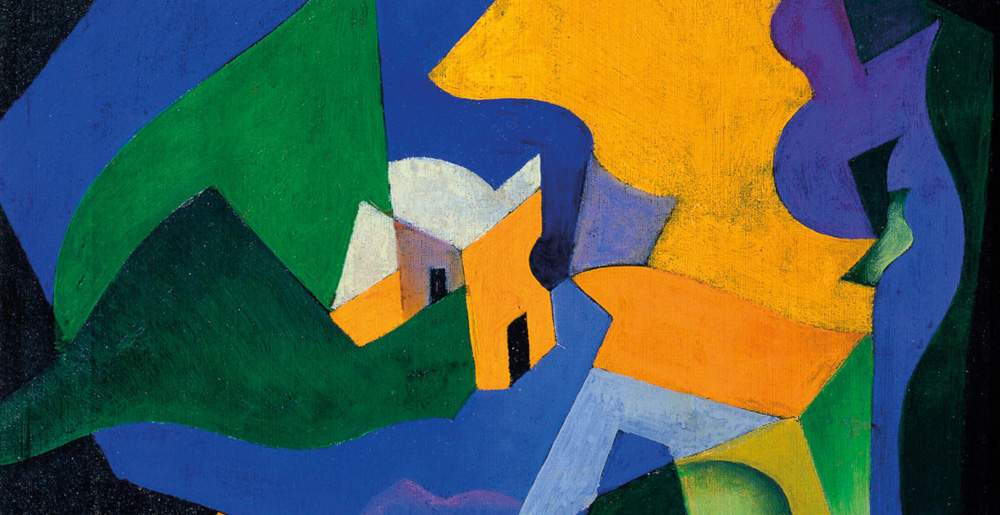At the National Museum of Matera - Palazzo Lanfranchi was inaugurated today, in the presence of Minister of Culture Gennaro Sangiuliano and Director General of Museums Massimo Osanna, the exhibition Futurismo Italiano. The Contribution of Southern Italy to the Developments of the Movement, which can be visited until January 10, 2024, conceived by Annamaria Mauro and Daniele Ferrara, curated by Massimo Duranti, and promoted by the National Museum of Matera in collaboration with the Veneto Regional Museums Directorate - National Museum Salce Collection. On display are more than one hundred and thirty paintings, sculptures and drawings from public museums, foundations, archives and private collections. Published and unpublished archival documents from various institutions enrich the exhibition. Twenty-five Futurist posters come from the National Museum Salce Collection, confirming the collaboration between the National Museum of Matera and the Veneto Regional Museums Directorate around the Futurismi project.
Alongside the names of protagonists such as Boccioni, Balla, Severini, Carrà, Depero, Prampolini, Dottori, and Benedetta, lesser-known but no less significant ones appear, such as Roherssen, Bologna and Castellana. As for the aeropainters, there are works by numerous Futurists whose peculiarities were declined by Marinetti himself in 1939: Prampolini and Crali included in the “Aeropittura stratosferica cosmica biochimica”; Fillia and Diulgheroff in the “Aeropittura essenziale, mistica ascensionale simbolica”; Dottori, Benedetta, Bruschetti, Peruzzi, Tano and Angelucci in that transfiguratrice lirica spaziale; Tato in the “sintetica e documentaria.” Works by Dottori, Fillia and Bruschetti represent Futurist Sacred Art, codified by the 1931 manifesto.
In addition toAeropittura, Futurist developments include the mechanistic tendency that is represented by works by Depero, Pannaggi and Prampolini, which will later manifest cosmic idealism, a prerequisite of abstractionism. Particular attention is given in the exhibition, looking specifically at the South, to the Circumvisionisti, the group of Campanian Futurists who were active as early as 1914: painters, spoken word poets, writers and intellectuals who animated the Futurist presence in Capri and Naples. Thus, works by brothers Francesco and Pasqualino Cangiullo, Buccafusca, Cocchia, Peirce, Lepore, and Maino are shown, protagonists of a cultural path from Futurism to the Neapolitan theater of Antonio De Curtis.
A focus is also reserved for Lucania’s contribution to Futurism: in fact, two very rare works by Joseph Stella, defined as “America’s first Futurist,” because he was born in Muro Lucano but moved to the United States at the age of nineteen, are on display.
The exhibition, as Matera National Museum director Annamaria Mauro explains, is intended to be “a reinterpretation of the role played by the Mezzogiorno in the spread and elaboration of the Movement, which wants to take up the discourse of Italy, from Campania and Abruzzo down and as far as the major islands, as the greatest ’place’ of Futurism, a place animated not only by Futurists born and lived in the Mezzogiorno, but also by all the Italian Futurists who in the events and manifestations held in the South took an active part as protagonists, co-players and actors.”
“In the catalog,” emphasizes curator Duranti, “in the context of the outcomes of the Futurist Reconstruction of the Universe, the 1915 manifesto, signed by Giacomo Balla and Fortunato Depero, is recalled, marking the continuity and evolution of the first ’heroic’ season of Futurism and which theorized the movement’s interest in all forms of expressiveness and thus literature, poetry, cinema, theater, music, furniture, and cuisine. For this reason, a section of the exhibition is devoted to applied arts: furniture, tapestries, clothing, majolica. Important is the presence of Russolo’s Intonarumori, in Pietro Verardo’s reconstruction that sonorously re-proposes the futurist’s invention in the field of music-not music. Alongside this apparatus and still on the subject of music, the scores, preserved at the Lorenzo Perosi Conservatory of Music in Campobasso, by Nuccio Fiorda are displayed.”
“Futurism, a movement that from Italy established itself all over the world, knew how to leave strong-toned traces in the South as well, in the sign of a cultural challenge to renewal and the creation of modernity,” emphasized Culture Minister Sangiuliano. “Reconstructing the transitions to the South of these avant-garde visionaries is one of the challenges met by the organizers of the exhibition, who have first and foremost achieved the goal of the cognitive recovery of this phenomenon that infected all artistic disciplines, leaving a legacy of thought and creativity that is still relevant today.”
A multimedia installation by Inera spectacularly presents Futurism with images of the exhibition and Matera. In the catalog published by Gangemi Editore International, in the two editions in Italian and English, there is an extensive updated chronology that reconstructs the historical itinerary of Futurism in Southern Italy through the most significant exhibitions, articles and events of that period.
For all info visit www.museonazionaledimatera.it
Image: Enrico Prampolini, Costruzione spaziale-paesaggio, detail (1919; oil on canvas, 47x47.3 cm; Rome, private collection)Courtesy Futur-ism Roma.
 |
| How did the Mezzogiorno contribute to the developments of Italian Futurism? An exhibition in Matera |
Warning: the translation into English of the original Italian article was created using automatic tools. We undertake to review all articles, but we do not guarantee the total absence of inaccuracies in the translation due to the program. You can find the original by clicking on the ITA button. If you find any mistake,please contact us.